Lead nurturing builds trust with prospects and boosts your chances of converting qualified leads into paying customers.
In this article, we’ll introduce the concept of lead nurturing, show you the benefits of it, and show you six actionable lead nurturing tactics that you can implement in your business today.
Let’s dive straight in.
What is Lead Nurturing?
Lead nurturing is the set of actions you take to help convert your sales leads into paying customers.
The aim is to keep a lead engaged in your sales process and continually add value with each stage of your lead nurturing process.
An example of a lead nurturing process could be:
- First touchpoint: a personalized cold email
- Second touchpoint: a LinkedIn connection request
- Third touchpoint: a follow-up email with a personalized video
- Fourth touchpoint: A targeted ad linking to an educational eBook
Every company will use a different process, so make sure to experiment and track your sales metrics to see which tactics work most effectively.
Benefits of Building a Lead Nurturing System
There are several key reasons you need to think about your lead nurturing strategy.
- Increase conversion rates: The first significant benefit is that you’ll get more sales. Leads who are nurtured are 20% more likely to convert compared to non-nurtured leads. Over the course of a quarter, that could mean tens of thousands in revenue.
- Improve lead quality: Your sales team should only spend time with high-quality leads. Data shows that an average of only 25% of leads in your sales pipeline at any time are qualified and should advance to sales. Your lead nurturing process filters out unqualified leads and gives your sales team more time to focus on the best-fit leads.
- Competitive advantage: Most leads in your pipeline are talking to other companies. However, 65% of marketing teams say they don’t have a lead nurturing process. By implementing one, you’ll immediately stand out from your competition and have an improved chance of closing leads.
In short, lead nurturing is an essential part of any B2B sales and marketing strategy. It will help you close more deals, improve the quality of your leads, and give you a clear advantage over the competition, turning you into an industry leader.
Next, let’s look at actionable lead nurturing tactics you can use to get more conversions.
6 Lead Nurturing Methods to Boost Conversions
1. Add Multiple Email Follow-Ups
No matter where your prospects are in the pipeline, you can leverage the power of automated follow-up emails to generate more replies.
For example, if you’ve contacted a prospect via cold email, you won’t always get a reply on your first email. Data shows that 55% of replies come from a follow-up step.
By adding at least one follow-up, you’ll see a huge increase in response rates and can convert more cold prospects into warm leads in your pipeline.
Nearly all good cold email software allows you to add automatic email follow-ups. This empowers your team to nurture cold emails on autopilot.
In QuickMail, simply add a new email step after a three to five-day delay.
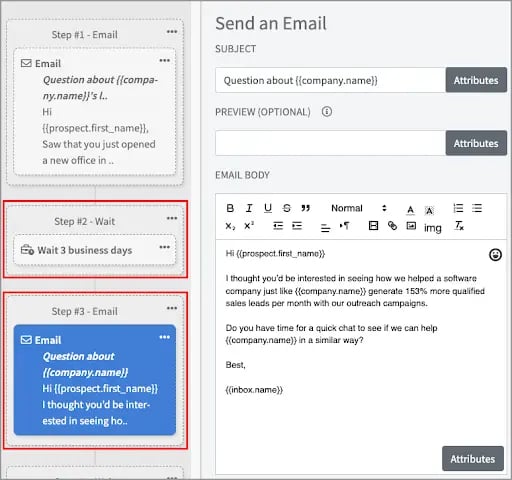
Write out an email, and if your recipient doesn’t reply to your first email touch, your follow-up will go out automatically.
This tip also applies to leads who are already in your sales pipeline.
We’ve all been in a situation where we finish a demo call with a sales lead and everything goes well – but, after the call, they don’t get back to you.
- You can use follow-up emails to re-engage a lead by:
- Sending them more educational content
- Forwarding your most relevant case studies and success stories
- Sharing personalized videos expanding on pain points they mentioned in your call
Over time, your email sequence will bring your leads back into your sales funnel and give you the best chance of converting every relevant prospect into a happy customer.
2. Leverage Social Proof to Increase Trust
Social proof is one of the best assets you can leverage in your lead nurturing strategy.
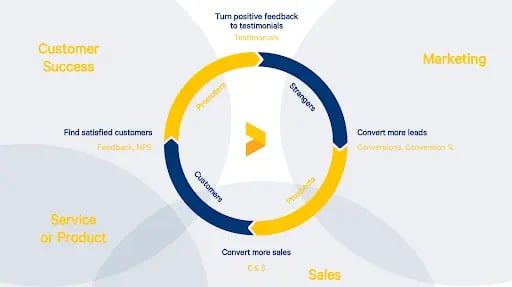
A Nielsen study found that 68% of people trust consumer opinions posted online. If you can share testimonials or case studies with your leads, they’ll trust you more and be more likely to work with you.
There are different types of social proof you can tap into, such as:
- Customer logos on your website and sales deck
- Written testimonials and quotes on your website
- Video testimonials where customers share their experience
- Long-form case studies in text and video formats
Research has found that video testimonials can be 91% more effective than text-based testimonials, so it’s important to experiment with different formats.
You can use social proof:
- In your cold email templates
- On your website and landing pages
- In your email marketing campaigns
- As a slide in your sales deck
Over time, you’ll learn which customer stories are most effective and can deploy those in multiple formats: text, video, email, and more.
It’s a powerful way to build trust with cold leads and improve your conversion rate.
3. Use Video Marketing to Catch Your Lead’s Attention
Video is an incredible tool for lead nurturing.
78% of marketers say that video has directly increased sales once they started using it.
Video works well because it’s engaging, easy to consume, and it can be personalized to every lead in your pipeline.
For example, you could use a tool like VIEWED to create hundreds of personalized videos at once and automatically add each video to a cold email campaign.
Every sales lead will receive a fully unique video in their inbox, ensuring your emails stand out and cut through the noise in their inbox.
Once your leads have replied and are in your pipeline, you can use video to share educational content, answer questions about your product/service, and offer a more engaging alternative to a text-only interaction.
With a platform like VIEWED, you can track your video views and engagement stats, so you always know how your videos are performing.
4. Run Multi-Channel Ads to Target Accounts
The average buying process for a B2B product or service involves six to 10 decision-makers. However, these decision-makers won’t all be on your sales calls or be included in your email threads.
To ensure your message is getting in front of all of those decision-makers to build buy-in, you can run targeted ads that will catch their attention and keep your brand top of mind. It’s a powerful way to nurture leads even if you haven’t personally talked to them before.
One of the best advertising channels you can leverage is LinkedIn.
This is because you can target your ads to show only to people working at specific companies.
If you create an engaging, personalized ad that matches the main priorities for your prospects, you’ll catch their attention and remind them about the benefits of working with you.
5. Leverage Personalized Sales Assets
Personalization is a critical part of your sales process.
You can use it from the moment you reach out to a cold prospect, all the way through to the moment where you close a new sale.
Here are some examples of where you can add personalization:
- Write a personalized icebreaker in your cold emails.
- Prepare a custom sales slide deck before you have a demo call with a prospect.
- Share a customized proposal after a demo call.
- Record a personalized video and send it to new clients.
- Offer a one-to-one call to help with client onboarding.
Research has found that 86% of people say that personalization impacts what they purchase, and 25% of people say personalization significantly influences their purchase decisions.
When personalizing your sales assets, you can do things like:
- Add their company name and first name to all sales documents, rather than using boilerplate templates.
- Mention key benefits unique to them.
- Record a personalized video where you show your product/service being applied to their company.
In short, personalization is anything that proves you’re treating each sales lead as an individual. As a result, it’s one of the most powerful ways to nurture leads and show why they should do business with you.
6. Build a Lead Scoring System
Lead scoring is a process of assigning points to each sales lead in your pipeline.
For example, a lead may get +5 points for signing up to your mailing list. +10 points for booking a demo call. +15 points for starting a free trial of your product.
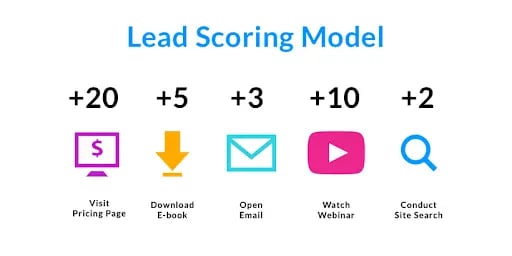
Many CRMs will have lead scoring built in, and tools like proposal software will generally also include a tracking system that shows you when leads open or engage with your sales assets.
The main benefit of this is that your team can quickly identify which leads are most likely to convert at any time.
If leads don’t meet a certain threshold of points, you can disqualify them from your sales process and move your team’s time and effort onto leads that are more likely to buy.
Every company will have a unique lead scoring process, so take time to understand what factors turn a lead in your sales process into someone who is ready to buy.
Wrapping Up
Lead nurturing is a powerful sales process that every team needs to implement.
Once you have a system in place, you’ll convert more leads into paying customers on autopilot.
There are a variety of lead nurturing tactics you can test, from follow-up emails, to sharing personalized videos using VIEWED, to using a lead scoring system.
Once you implement one, measure your results and see if it makes a positive impact. If it does, you can build it into your sales system and then roll out new lead nurturing initiatives to further improve your processes.


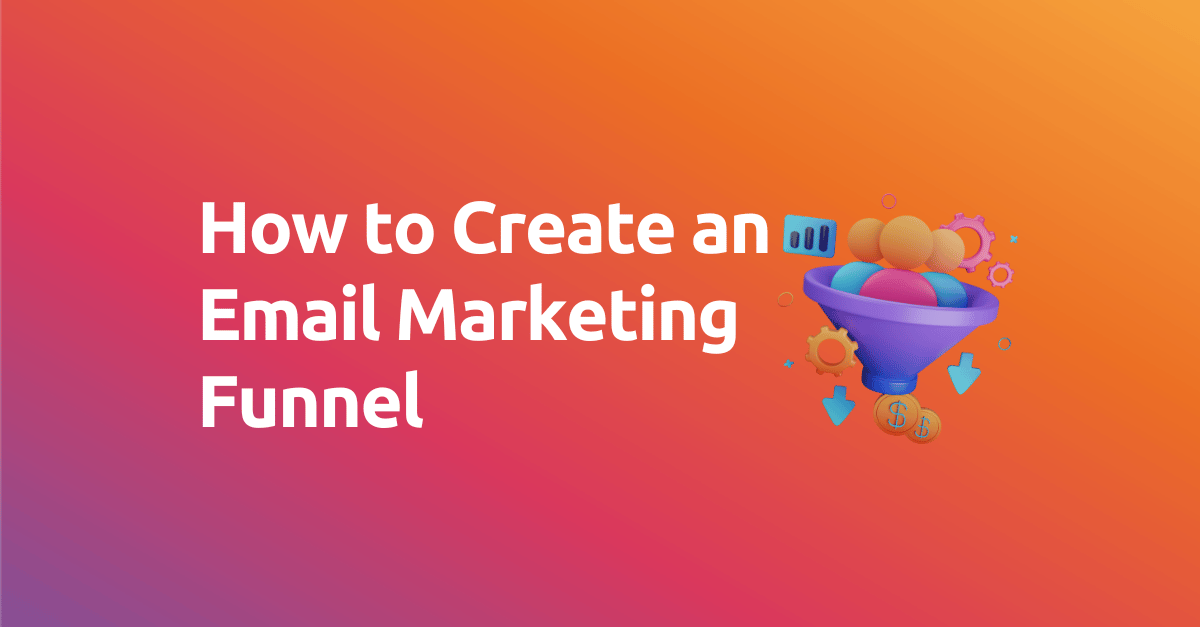
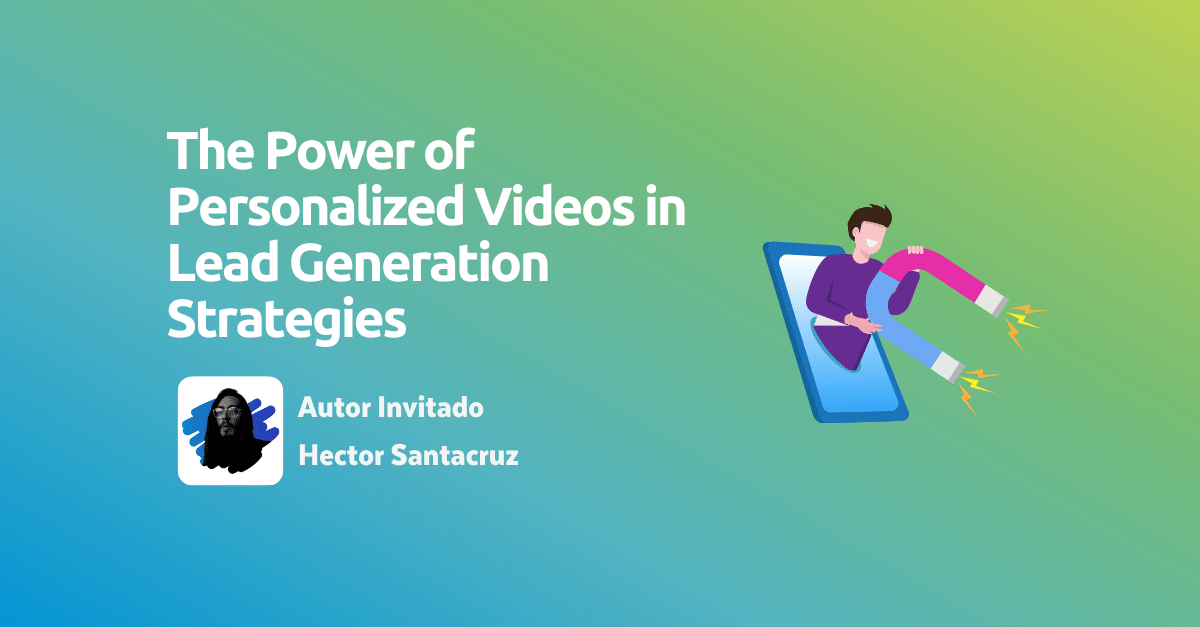
-1.png)